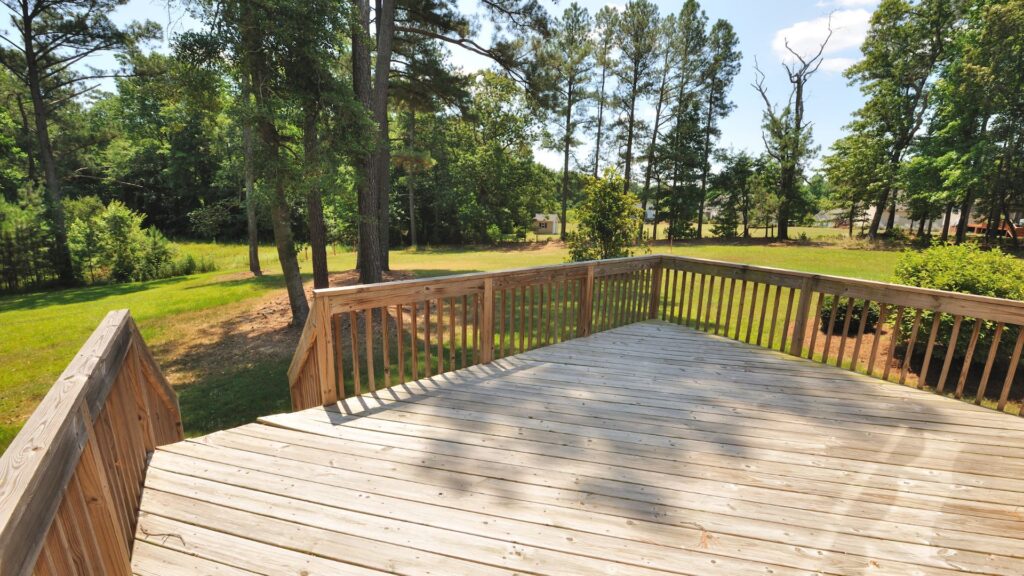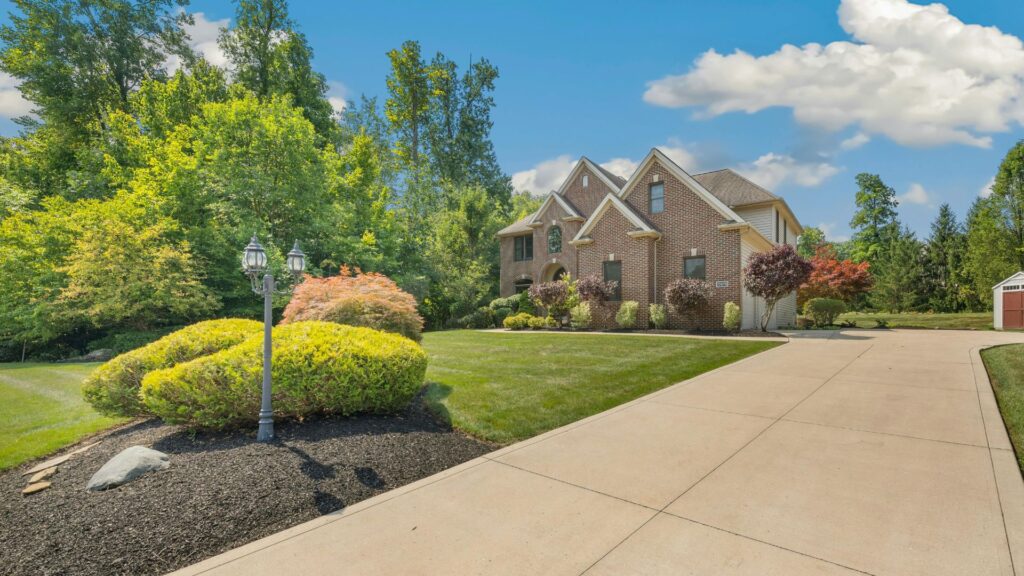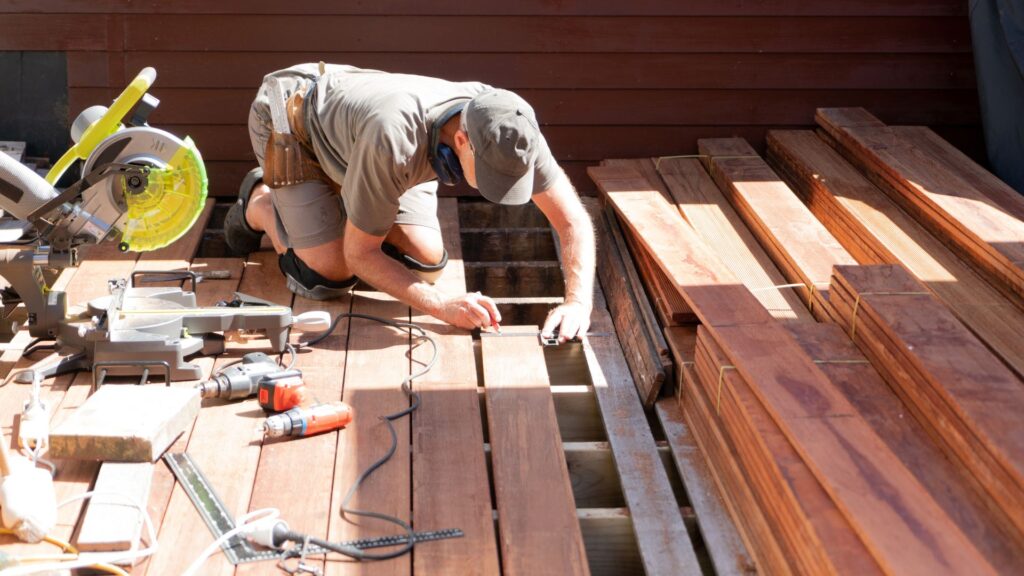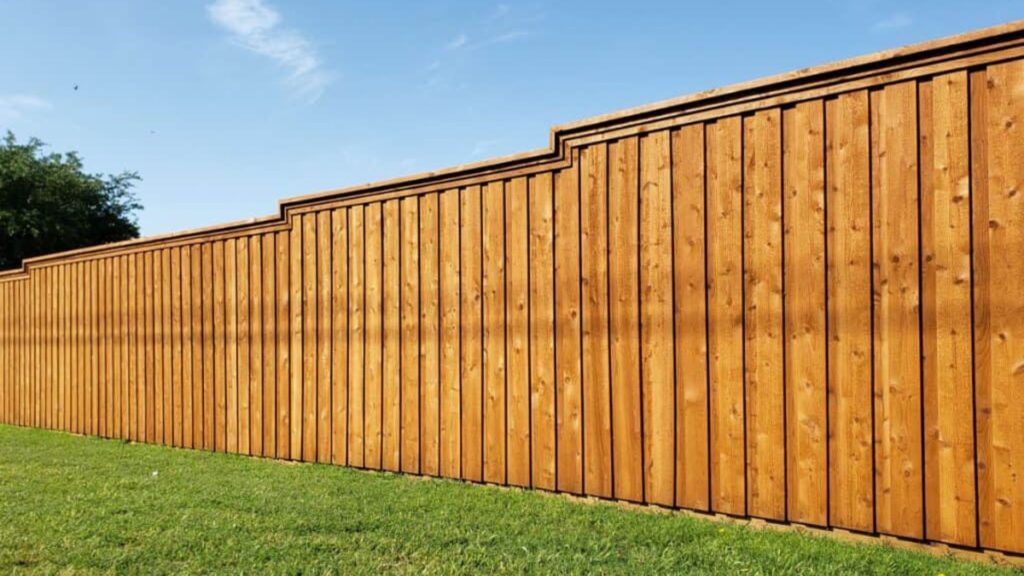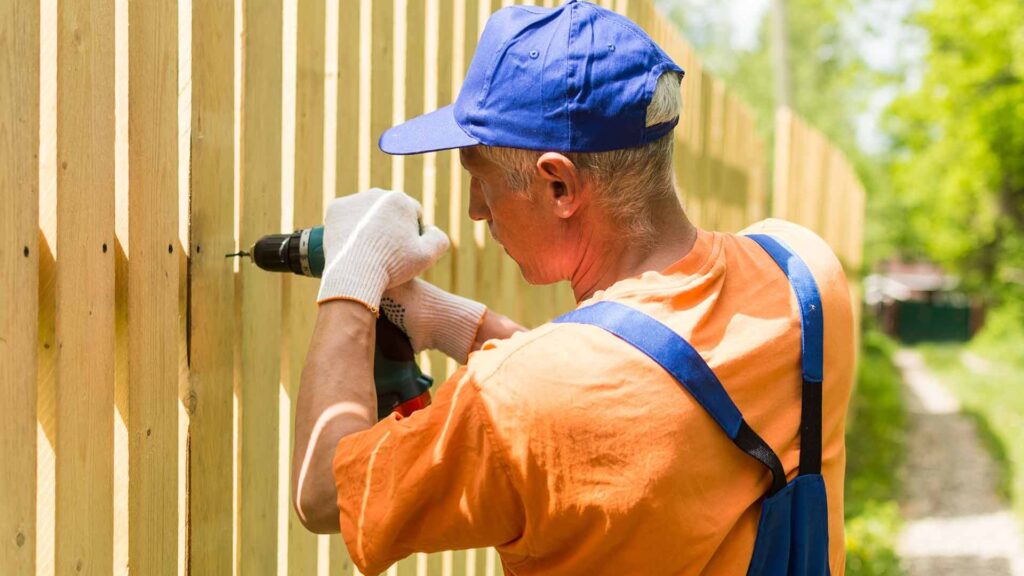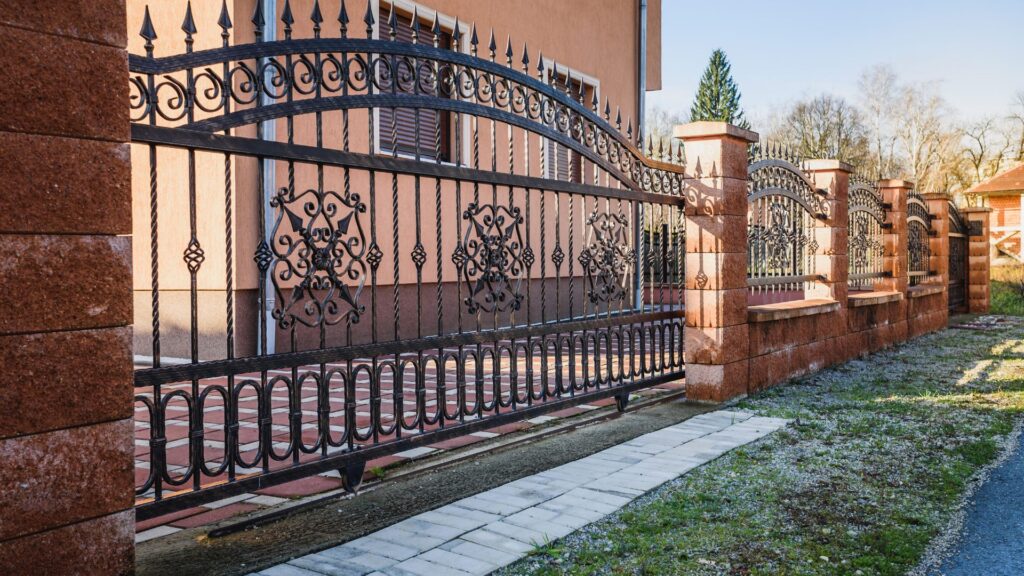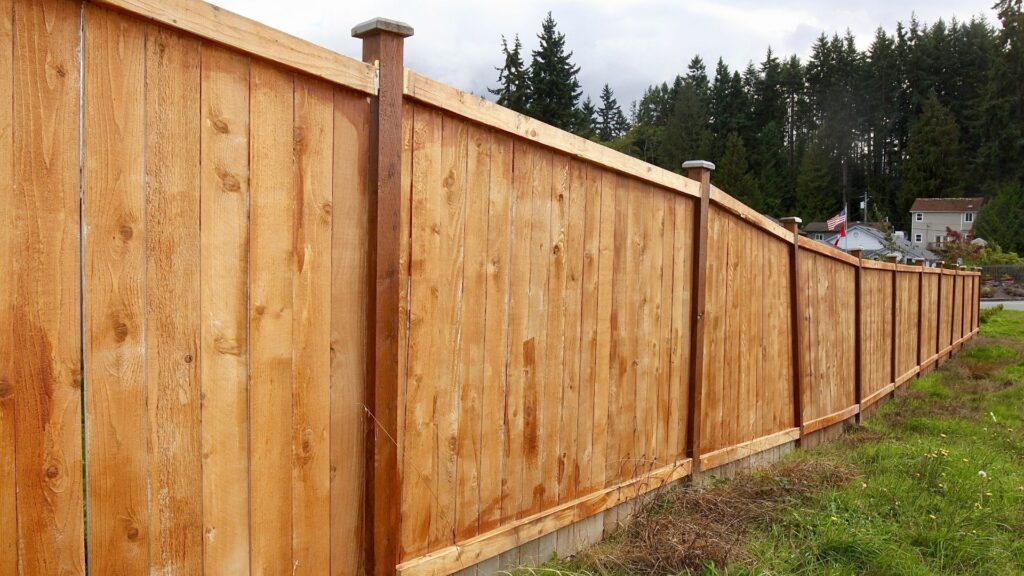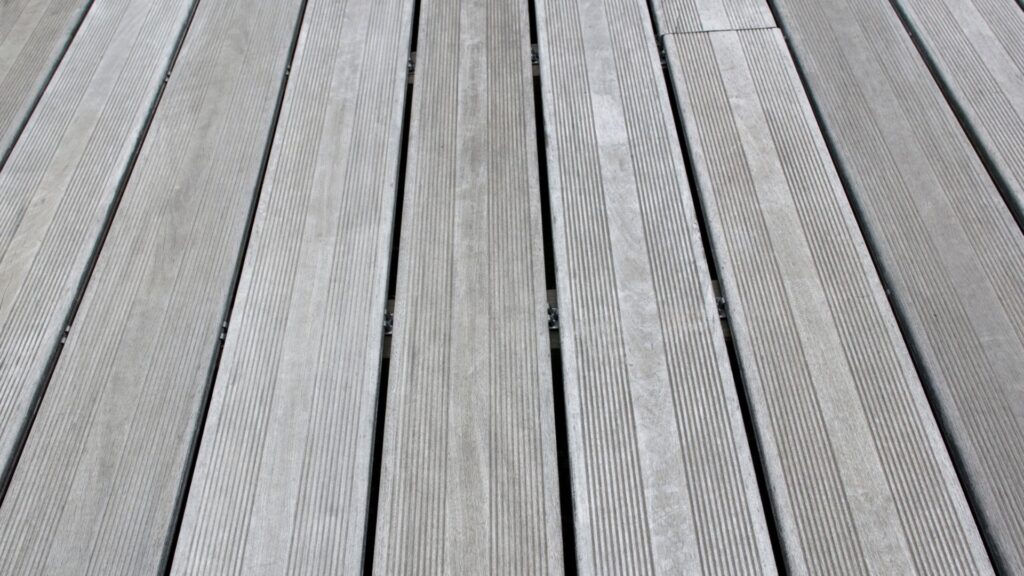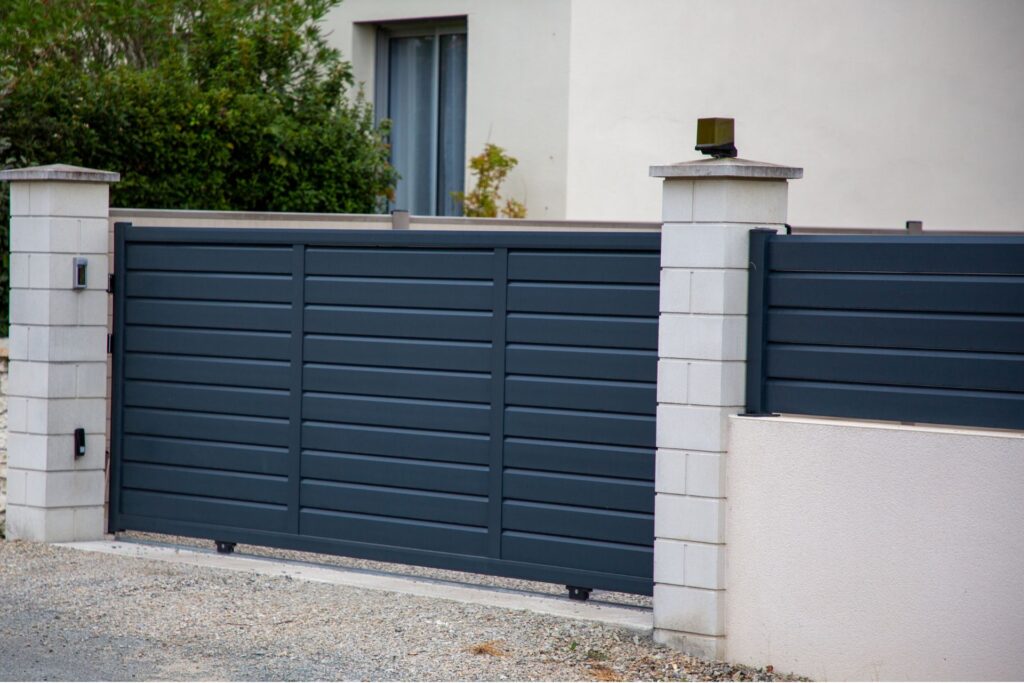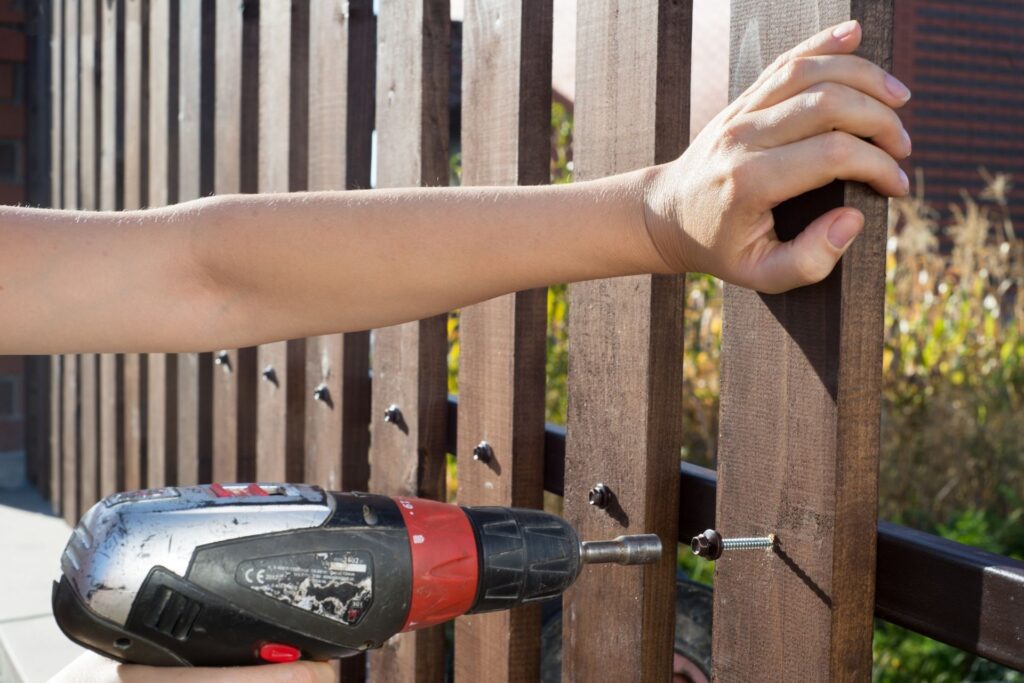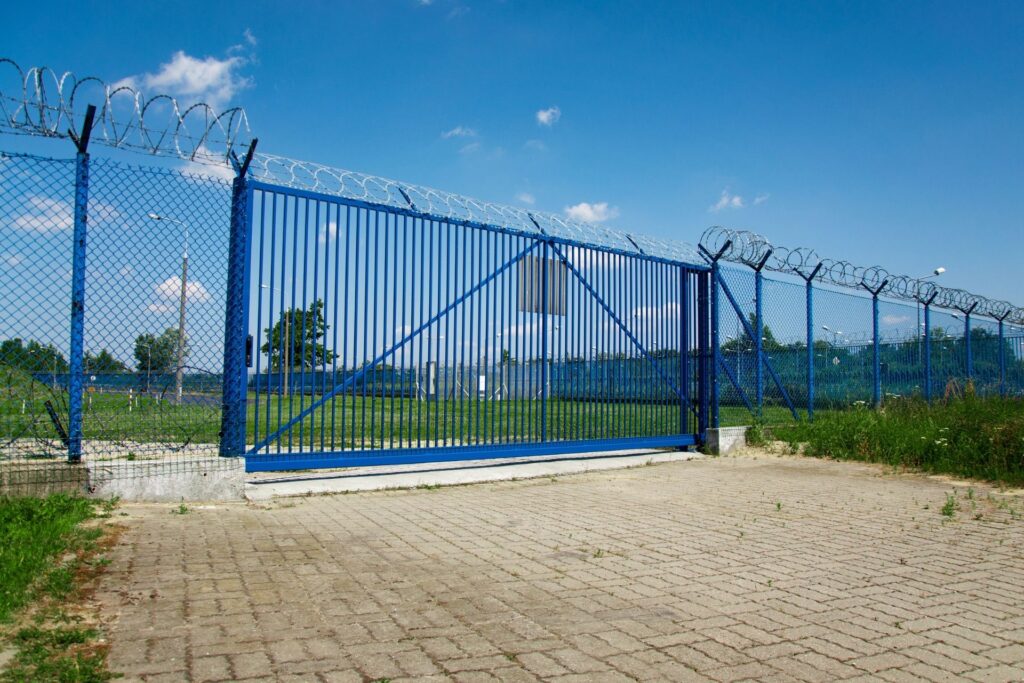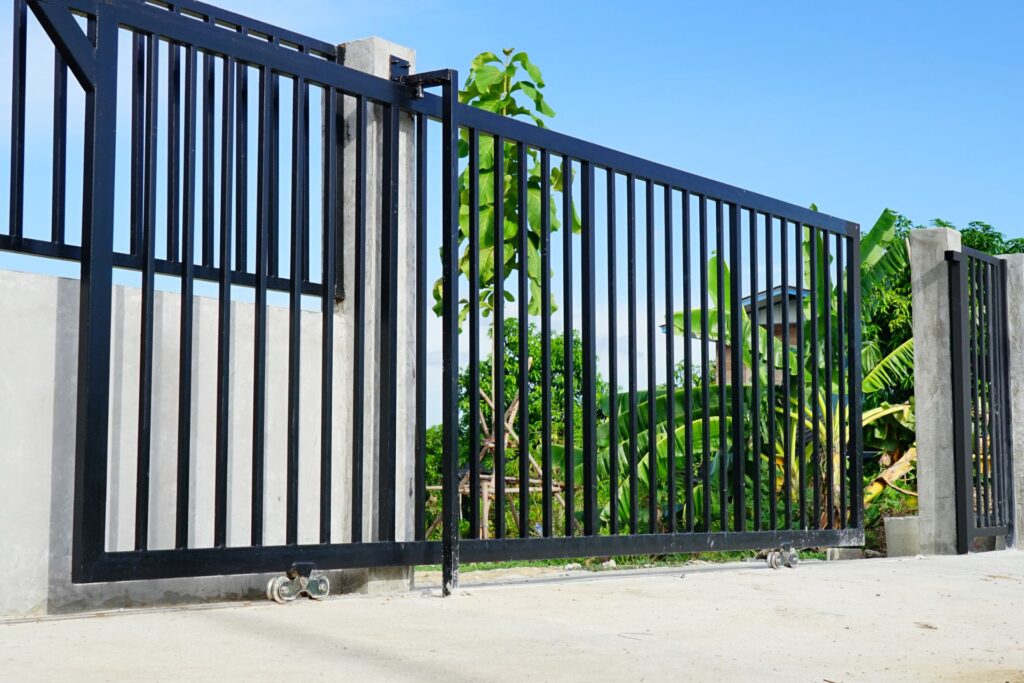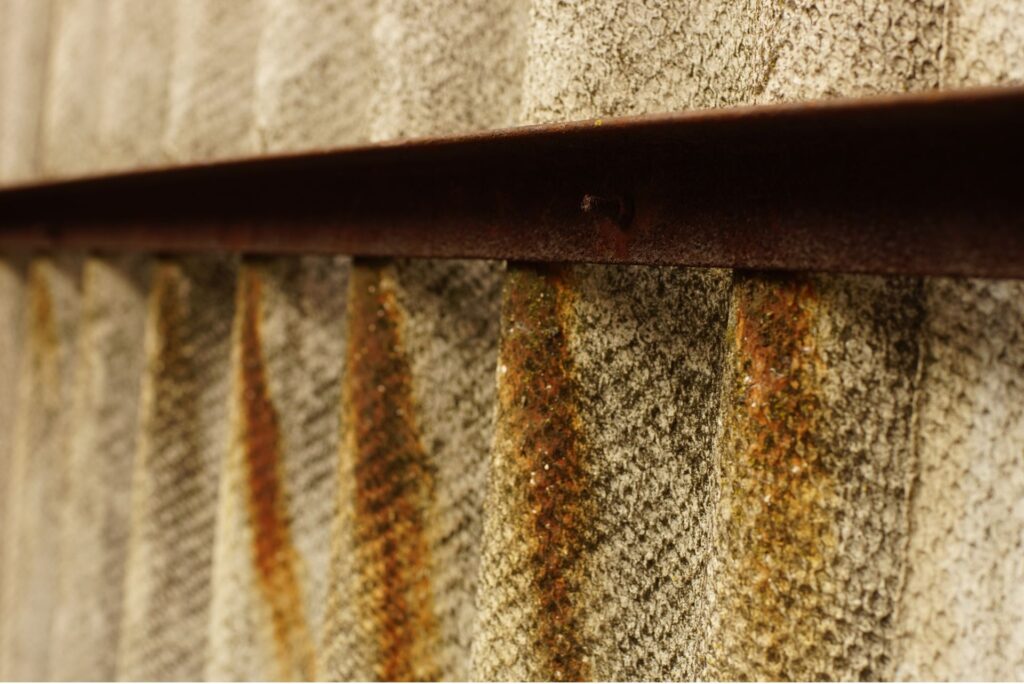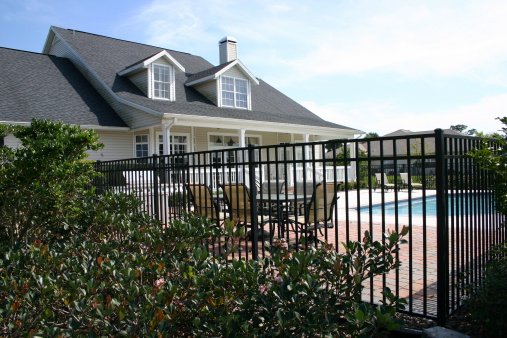Welcome to your comprehensive guide on the cost of decking in New Zealand! If you’re considering adding a deck to your home, you’re likely wondering about the financial investment involved. Decks are a popular choice for Kiwi homeowners looking to extend their living spaces and create an outdoor area perfect for relaxing or entertaining. However, the cost of building a deck can vary significantly depending on factors such as the materials you choose, the size and design of the deck, labor costs, and even your location. In this guide, we’ll break down everything you need to know about the cost of decking in NZ, helping you make informed decisions and budget effectively for your project.
On average, the cost of decking in New Zealand ranges from $200 to $1,000 per square meter, depending on the materials used, such as timber or composite, and the complexity of the design. Factors like labor costs, site preparation, and additional features can also influence the overall price.
- What Influences The Cost Of Decking In NZ?
- Comparing Material Costs For Decking In NZ
- Labor Costs And Professional Installation
- Additional Costs To Consider
- How To Save Money On Decking In NZ
- Long-Term Value And Return On Investment
- Case Study: Average Decking Costs For A 20 SQM Deck In NZ
- FAQs: About Cost Of Decking NZ
- How much does it cost to build a deck in New Zealand per square meter?
- What is the most affordable decking material in New Zealand?
- How much does composite decking cost in NZ?
- Do I need a permit to build a deck in New Zealand?
- What are the labor costs for decking in NZ?
- What is the lifespan of different decking materials?
- What additional costs should I consider when building a deck?
- Can I build a deck myself, or should I hire a professional?
- How can I save money on my decking project?
- Does adding a deck increase the value of my home?
- Conclusion
What Influences The Cost Of Decking In NZ?
When considering building a deck in New Zealand, it’s essential to understand the various factors that influence the overall cost. Whether you’re looking for a simple, functional space or a more elaborate outdoor extension of your home, several key elements will determine how much you need to budget. These include materials, deck size, location, design complexity, and necessary permits and regulations. Let’s dive into each of these factors in more detail.
Materials
The type of materials you choose for your decking is one of the most significant factors that will affect both the upfront cost and long-term maintenance expenses. In New Zealand, there are a few popular choices when it comes to decking materials, each with its pros, cons, and price range.
Timber (Pine, Hardwood)
Timber is a traditional and widely-used material for decks in NZ, offering a natural look that blends seamlessly with the outdoor environment. Pine is one of the most cost-effective timber options, typically ranging from $200 to $400 per square meter. It’s durable when treated but requires regular maintenance, such as staining and sealing, to protect it from the elements. On the other hand, hardwoods like Kwila or Vitex are more expensive, costing between $400 and $700 per square meter. While hardwood decking is known for its long lifespan and durability, it also demands a higher level of care to maintain its appearance and prevent weathering.
Composite Decking
For homeowners looking for a low-maintenance option, composite decking is an excellent alternative to timber. Made from a mix of wood fibers and recycled plastic, composite decking can range between $400 and $600 per square meter. The key advantage here is its durability and minimal upkeep—composite decking is resistant to rot, warping, and insect damage, making it a longer-lasting option with far less maintenance required compared to timber. Additionally, composite decking is an environmentally-friendly option, as it often incorporates recycled materials. However, the initial investment is higher, though the long-term savings on maintenance can offset this.
Other Materials (PVC, Metal)
Though less common, other decking materials like PVC and metal are also available for those seeking alternatives to timber or composite. PVC decking, which is entirely synthetic, offers extreme durability and is resistant to weathering, though it can be more expensive, ranging from $500 to $800 per square meter. Metal decking, typically made from aluminum, is another durable and low-maintenance option, though it’s often used in more commercial or modern design settings due to its appearance and cost, which can exceed $700 per square meter.
Deck Size
The size of your deck is directly proportional to the overall cost of your project. Naturally, the larger the deck, the more materials you will need and the more labor is involved, which increases the final cost. For example, a small deck of about 10 square meters might cost between $2,000 and $7,000 depending on the materials chosen. However, if you’re building a more spacious deck of 20 square meters or more, the cost could easily reach between $8,000 and $20,000. It’s important to not only consider how much space you need but also how that space will affect your budget. Sometimes, scaling back on size or opting for cost-effective materials can help you manage costs without sacrificing functionality.
Location
Geographical location plays a key role in decking costs in New Zealand. Urban areas typically have higher costs due to increased demand for contractors and more expensive materials, while rural areas might offer some savings on labor but could incur higher transportation costs for materials if suppliers are far away. The climate of your region also impacts material choices and maintenance requirements. For example, wetter regions like the West Coast may require more durable, weather-resistant materials such as hardwood or composite, which can handle moisture better than untreated pine. Additionally, terrain can add to the cost—if your deck needs to be built on uneven or sloped ground, additional site preparation and foundation work will increase the overall expense.
Complexity of Design
The complexity of your deck’s design is another major factor that can drive up costs. A simple, rectangular deck with basic railings will be more affordable to build than a multi-level deck with custom features such as built-in seating, pergolas, or intricate stairs. For instance, if your deck includes multiple levels or unique shapes, the cost of labor will rise due to the increased time and skill required for construction. Complex designs can also require more materials, which further adds to the total cost. On the other hand, opting for a straightforward design can help you stick to a more modest budget without compromising the overall quality of the deck.
Permits and Regulations
Lastly, don’t overlook the potential costs associated with permits and regulations. In New Zealand, whether or not you need a permit to build a deck depends on its height and location. If your deck is more than 1.5 meters above ground, you’ll likely need to apply for a building consent from your local council. The cost of a permit varies depending on the region and the complexity of the project but can range from $300 to $1,000. Additionally, if the deck construction interferes with drainage or is built near property boundaries, you may need further approvals or inspections, which can add to both the time and cost of your project.
Understanding the factors that influence the cost of decking in New Zealand is crucial for anyone planning to build a deck. By considering the material options, deck size, location, design complexity, and any necessary permits, you can better estimate your total budget and make informed decisions throughout the project. Whether you’re aiming for a simple and functional space or a more elaborate outdoor living area, knowing what drives costs will help you stay on track and ensure your investment brings long-lasting value to your home.

Comparing Material Costs For Decking In NZ
When it comes to building a deck in New Zealand, the material you choose plays a significant role in determining both the upfront cost and the long-term expenses. Different materials have unique characteristics, costs, and maintenance requirements. Let’s take a closer look at the three most common decking materials: timber, composite, and alternative options like PVC or metal, to help you make an informed decision based on your budget and needs.
Timber Decking Costs
Timber remains one of the most popular decking materials in New Zealand, offering a natural look that complements outdoor spaces beautifully. There are two main types of timber commonly used for decking: Pine and Hardwood.
- Pine Decking: Treated pine is the most affordable timber decking option available in NZ, with prices generally ranging between $200 and $350 per square meter. Pine is widely used because it’s cost-effective and relatively easy to work with. However, it does require regular maintenance to prevent weather damage and maintain its appearance. Expect to stain or seal your pine deck annually to prolong its lifespan, which typically lasts 15 to 20 years with proper care.
- Hardwood Decking: Hardwood options such as Kwila or Vitex are more durable and offer a premium, long-lasting finish. These materials are more expensive, usually ranging from $400 to $800 per square meter, depending on the type of wood. Hardwoods naturally resist rot and insect damage better than pine, and they tend to have a lifespan of 25 to 40 years. However, like pine, hardwood also requires routine maintenance to retain its color and structural integrity.
When choosing between pine and hardwood, consider your budget and your willingness to maintain the deck regularly. While hardwood comes with a higher upfront cost, its durability and rich appearance often make it a worthwhile investment in the long term.
Composite Decking Costs
Composite decking is a modern alternative to timber, made from a blend of wood fibers and recycled plastics. Its popularity is growing in New Zealand due to its low maintenance and long lifespan.
- Upfront Costs: Composite decking tends to be more expensive initially, with prices generally ranging from $400 to $600 per square meter. However, the trade-off is that composite decks require far less maintenance than timber decks. With composite, there’s no need for staining, sealing, or regular treatment. This means that while you may pay more upfront, the long-term savings on maintenance can make composite a more cost-effective choice over time.
- Variety and Durability: Composite decking comes in a wide range of colors and textures, often designed to mimic the look of natural wood without the associated upkeep. This gives homeowners the flexibility to choose a deck that fits their aesthetic preferences. Composite is also resistant to rotting, warping, and splintering, making it ideal for New Zealand’s diverse weather conditions.
- Environmental Considerations: Many composite decking products are made from recycled materials, which makes them a more eco-friendly option compared to traditional timber. This is a key factor for environmentally-conscious homeowners looking to reduce their carbon footprint.
Composite decking is an excellent choice for those looking for a low-maintenance, long-lasting deck, particularly if you’re willing to invest more upfront to save on future upkeep.
Other Decking Material Costs (PVC, Metal)
While less common, PVC and metal decking materials are niche options that may appeal to homeowners seeking specific features or aesthetics.
- PVC Decking: PVC (polyvinyl chloride) decking is entirely synthetic, making it an ultra-durable and low-maintenance choice. Prices for PVC decking typically range between $500 and $900 per square meter. Like composite, PVC doesn’t require staining or sealing and is highly resistant to mold, mildew, and insect damage. It’s also lightweight, making it easier to install. However, some homeowners may find that PVC lacks the natural look and feel of wood, though it does come in a variety of colors.
- Metal Decking: Metal decking, such as aluminum, is another option that offers extreme durability and longevity. Metal decks are resistant to fire, pests, and weathering, making them ideal for areas exposed to harsh environmental conditions. While not common in residential decking, metal can be an attractive choice for those looking for an industrial or modern aesthetic. Metal decking costs can vary significantly but generally range between $700 and $1,000 per square meter, depending on the material and design.
Homeowners who choose PVC or metal decking often do so for their durability and unique aesthetic appeal. Both materials offer excellent resistance to weather and wear, making them suitable for regions with extreme weather conditions or where maintenance-free living is a priority.
The material you choose for your decking in New Zealand will significantly impact the overall cost, both initially and in the long run. Timber, whether pine or hardwood, offers a traditional look with varying levels of maintenance and durability. Composite decking, while more expensive upfront, provides long-term savings and a hassle-free experience. PVC and metal options, though less common, provide durable and low-maintenance alternatives that can cater to specific needs or design preferences.
When planning your decking project, weigh the initial costs, maintenance requirements, and lifespan of each material to find the best option that suits your budget and lifestyle.

Labor Costs And Professional Installation
When planning to build a deck in New Zealand, one of the biggest decisions you’ll face is whether to tackle the project yourself or hire a professional contractor. Each approach has its benefits and challenges, and choosing the right one depends on your budget, time, and skill level. Additionally, understanding the labor costs involved and how contractors price their services can help you make an informed decision and budget effectively.
DIY vs. Hiring a Professional
Deciding between DIY and hiring a professional contractor for your decking project is a significant consideration. Here’s a closer look at the pros and cons of each option.
- DIY Decking: Building a deck yourself can be an appealing choice, especially if you have some experience in construction or woodworking. The most obvious benefit of a DIY project is the potential cost savings. By eliminating labor costs, you can allocate more of your budget towards higher-quality materials or additional features for your deck. A DIY project also allows for complete creative control, so you can make adjustments along the way without waiting on a contractor.
However, DIY decking comes with its challenges. It requires a significant time commitment, especially for larger or more complex designs. You’ll also need to be familiar with local building regulations, as obtaining permits and adhering to safety standards is crucial. Mistakes made during construction can be costly to fix and could potentially affect the longevity of the deck. Additionally, if you lack the necessary tools or skills, the results may not be up to professional standards, potentially lowering the value of your investment.
- Hiring a Professional: On the other hand, hiring a professional contractor comes with many benefits, particularly for those who want a high-quality deck built efficiently. Professional contractors bring experience, tools, and expertise, ensuring that the deck is constructed safely and meets all local building codes. They are also equipped to handle more complex designs and features, such as multi-level decks or built-in seating, that may be difficult to execute as a DIY project.
While hiring a professional increases costs, it can save you time and reduce the stress involved in managing a large project. Additionally, professional contractors often provide warranties on their work, giving you peace of mind knowing that the job will be completed to a high standard.
Labor Costs Breakdown
When hiring a professional, labor costs can vary widely depending on several factors, including the complexity of the project and your location in New Zealand. On average, labor costs for decking in NZ typically range from $50 to $120 per hour. However, these rates can fluctuate based on regional demand and the contractor’s level of experience.
For example, labor rates in larger urban areas like Auckland or Wellington are likely to be higher due to increased demand for skilled labor and the overall cost of living. In contrast, if you live in a rural or less populated area, you may find more competitive pricing, though you might have fewer contractor options to choose from.
Additionally, labor costs will increase if your decking project requires extensive site preparation, such as leveling the ground, dealing with challenging terrain, or adding drainage systems. More intricate designs, such as multi-tier decks or those with built-in features, will also require more time and expertise, further driving up labor expenses.
How Contractors Price Jobs
When it comes to pricing a decking project, contractors consider several factors beyond just labor rates. Understanding these factors can help you better anticipate the overall cost and negotiate more effectively. Here are some key aspects that contractors will assess when quoting a project.
- Site Preparation: The condition of your site plays a significant role in the overall cost. If the ground needs leveling, drainage issues need addressing, or there’s extensive vegetation to clear, this will increase both labor and material costs. Decking over uneven terrain or building on a slope may require additional foundation work, which can add to the project’s complexity.
- Deck Design and Size: The more intricate your design, the higher the cost. Simple, single-level decks are much easier and quicker to build, while multi-level designs or those with built-in seating, planters, or other features will require more labor. Larger decks naturally require more materials and labor, which will increase the overall cost.
- Material Handling: Some materials, like composite or hardwood decking, can be more challenging to work with than basic treated pine. Contractors may factor in the difficulty of handling certain materials, especially if they require special tools or extra care to install properly.
- Finishing and Extras: Additional features such as railings, stairs, or integrated lighting will add to the cost. Finishing touches like staining or sealing a timber deck will also require extra labor.
Getting Quotes
To ensure you’re getting the best deal for your decking project, it’s crucial to get multiple quotes from different contractors. Here are some tips on how to obtain accurate quotes and what to consider during the process.
- Be Specific About Your Requirements: When requesting a quote, provide as much detail as possible about your project. Include the size of the deck, the materials you want to use, and any additional features you plan to include. The more precise you are, the more accurate the quote will be. Vague details can result in unexpected costs later on.
- Ask About Hidden Costs: Some contractors may provide a low initial estimate but add on extra costs for things like permits, site preparation, or unforeseen issues. Ensure that the quote covers all aspects of the job, including labor, materials, permits, and any potential extras.
- Check Their Experience and Portfolio: A professional contractor’s experience is vital. Ask to see examples of previous work and read reviews from past clients. This will give you an idea of their craftsmanship and reliability.
- Consider Timing: Contractors may charge more during peak building seasons, such as spring and summer. If you’re flexible with your timeline, consider scheduling your project during the off-peak season to potentially save on labor costs.
- Negotiate and Compare: Don’t be afraid to negotiate, especially if you’re working with a limited budget. Compare quotes not only in terms of price but also based on the contractor’s experience, project timelines, and what’s included in the quote.
Understanding labor costs and the factors that influence them is essential when planning your decking project. Whether you decide to go the DIY route or hire a professional, knowing what to expect in terms of pricing and how contractors assess jobs can help you stay within budget and ensure your project runs smoothly.

Additional Costs To Consider
When planning a decking project in New Zealand, it’s essential to understand that the overall cost extends beyond just materials and labor. Several other factors can influence the total expense, many of which are easily overlooked during the initial planning stages. Let’s dive deeper into these additional costs that you should account for to avoid unexpected surprises.
Deck Foundation and Site Preparation
One of the most significant hidden costs of building a deck comes from the groundwork required to prepare the site. Before you can even begin constructing your deck, the area must be properly prepared. This includes site leveling, which ensures the ground is even, making your deck structurally sound and safe. Uneven terrain may require more intensive work, such as excavation or the use of additional materials to create a stable foundation.
Foundation work is another major consideration. Depending on the size and height of your deck, you may need to install a more robust foundation, which could include concrete footings, piles, or other forms of structural support. These are critical for decks that are elevated or built on sloping land, as they ensure stability and longevity.
Don’t forget about drainage. In New Zealand, where weather can vary drastically, proper drainage is crucial to prevent water from pooling around the foundation of your deck. Poor drainage can lead to structural issues over time, increasing maintenance costs and potentially leading to the need for repairs. Installing a drainage system or ensuring the land is sloped correctly may add to the upfront cost but is necessary for long-term durability.
Extras and Add-ons
When building a deck, it’s tempting to consider adding extra features that enhance both functionality and aesthetics. While these additions can significantly elevate the look and utility of your deck, they can also add substantially to the overall cost.
Railings and stairs are often necessary, particularly for elevated decks, but they can increase costs. Railings come in various materials, such as wood, metal, or glass, each with a different price point. Wooden railings are generally more affordable, while glass or metal can be more expensive but offer a sleek, modern look. Stairs, especially multi-level ones, require extra labor and materials, further raising the total expense.
Lighting is another add-on that many homeowners consider for both ambiance and safety. Deck lighting can range from simple solar-powered lights to more complex wired systems that may need professional installation. While lighting adds to the upfront cost, it’s an investment that enhances the usability of your deck during the evenings, making it a worthwhile consideration.
Finally, don’t forget about furniture. While not a part of the construction process, furnishing your deck can add hundreds to thousands of dollars to the overall cost. From outdoor seating and tables to fire pits and planters, these elements are what truly transform your deck into an inviting outdoor living space.
Ongoing Maintenance Costs
One cost factor that is often overlooked in the budgeting process is ongoing maintenance. Depending on the material you choose for your deck, maintenance can range from minimal to significant, and it’s essential to factor these future costs into your decision.
If you opt for timber decking, you’ll need to perform regular maintenance such as staining, sealing, and potentially replacing damaged boards over time. On average, timber decks need to be stained every 1-2 years to protect the wood from the elements, especially in New Zealand’s varied climate. Staining and sealing not only maintain the aesthetic of the deck but also prolong its lifespan by preventing rot, warping, or splintering. Each maintenance session can cost a few hundred dollars depending on the size of the deck, and these expenses add up over the years.
On the other hand, composite and PVC decks are much more low-maintenance. These materials are resistant to weathering, fading, and insects, meaning they require little more than an occasional cleaning. While they may have a higher upfront cost, their low maintenance needs can make them more cost-effective in the long run, especially for homeowners who want to minimize future work and expenses.
Permits and Inspections
Finally, one crucial cost that you cannot overlook is the potential need for permits and council inspections. In New Zealand, building a deck often requires a permit, especially if the deck is elevated or exceeds a certain size. The permit process involves submitting detailed plans to your local council, who will assess whether the design complies with building codes and safety regulations.
The cost of obtaining a permit can vary depending on your location and the complexity of your deck design. In addition to the permit fee, you may also need to pay for council inspections during and after the construction process to ensure everything has been built according to the approved plans. These inspections are vital to ensuring the safety and structural integrity of your deck but can add to the overall cost of the project.
Neglecting to secure the proper permits or ignoring the need for inspections can lead to fines or, worse, having to tear down and rebuild parts of your deck to comply with regulations. Therefore, it’s important to include these potential costs in your budget right from the start.
When budgeting for a new deck in New Zealand, it’s essential to think beyond just the materials and labor. Factors such as site preparation, foundation work, additional features, ongoing maintenance, and legal requirements can all add to the final cost. By accounting for these extra expenses early on, you can avoid unexpected costs and ensure that your decking project stays within budget while still delivering the outdoor living space you envision.

How To Save Money On Decking In NZ
Building a deck can be a significant investment, but with careful planning and smart choices, you can keep costs under control without sacrificing quality. Whether you’re working with a tight budget or just want to make the most of your money, here are a few practical ways to save money on decking in New Zealand.
Choosing Cost-Effective Materials
One of the easiest ways to save money on your decking project is by selecting materials that balance quality and affordability. While exotic hardwoods and composite decking may offer durability and low maintenance, they often come with a higher price tag. Treated pine, on the other hand, is one of the most affordable and popular options in New Zealand. It’s durable, widely available, and, when maintained properly, can last for many years. By opting for a more budget-friendly material like pine, you can significantly reduce the cost per square meter of your deck.
If you’re drawn to the look of hardwood or composite but can’t stretch your budget, consider mixing materials. For instance, using a more affordable material for the main deck structure and reserving pricier materials for accents or trim can give you a high-end look without the high-end price.
Timing Your Build
Believe it or not, timing can play a big role in how much you spend on your decking project. Like many other trades, builders and contractors often have peak and off-peak seasons. The warmer months—particularly spring and summer—are typically the busiest times for outdoor construction work, including deck building. Demand for labor and materials tends to drive up prices during these months.
By planning your build during the off-peak season, such as autumn or winter, you may be able to negotiate better rates with contractors who are looking for work during slower periods. Additionally, material suppliers sometimes offer seasonal discounts or promotions, further helping you save money. Just make sure to plan ahead and ensure that weather conditions won’t disrupt your build if you decide to construct your deck during the cooler months.
Sourcing Materials Locally
Another effective way to cut costs is by sourcing your decking materials locally. When you buy from local suppliers, you can often avoid hefty transportation fees that come with shipping materials from outside your region or even overseas. Local suppliers may also have stronger relationships with contractors in your area, potentially leading to better deals.
In addition to cost savings, sourcing locally also has environmental benefits. Reduced transportation means a lower carbon footprint, making it a more sustainable choice for eco-conscious homeowners. Plus, local suppliers will be familiar with the materials best suited to New Zealand’s climate, ensuring that your deck stands the test of time.
DIY Elements
If you’re handy and enjoy working on home improvement projects, there are several aspects of a decking project that you can take on yourself to reduce costs. While it’s generally recommended to hire a professional for complex tasks like structural work or electrical installations, there are simpler jobs that many homeowners can tackle.
For instance, painting or staining your deck is a straightforward DIY task that can save you the cost of hiring a contractor. With some basic tools and the right products, you can apply a finish that protects your deck from the elements and keeps it looking great. Similarly, tasks like assembling pre-made railing kits or laying out the decking boards can also be done with a bit of patience and attention to detail.
Just be sure to know your limits—taking on too much could result in mistakes that end up costing more to fix than hiring a professional in the first place. By choosing the right balance of DIY and professional help, you can save money without compromising the quality of your finished deck.
By carefully selecting materials, planning your build strategically, buying locally, and incorporating DIY elements where possible, you can keep your decking project within budget while still achieving a high-quality result.

Long-Term Value And Return On Investment
When considering the cost of decking in New Zealand, it’s essential to look beyond the initial price and consider the long-term value and return on investment (ROI) that a well-built deck can provide. Building a deck is not just about creating additional living space—it’s an investment in your property and your lifestyle.
Increased Property Value
One of the most significant benefits of adding a deck to your home is the potential to increase your property’s value. In New Zealand, outdoor living is a key part of the lifestyle, and prospective homebuyers often look for homes with usable outdoor spaces. A well-designed deck can be a major selling point.
In fact, real estate experts suggest that a thoughtfully constructed deck can increase your home’s resale value, often providing a solid ROI. Homeowners can expect to recoup a significant portion of the building costs when it comes time to sell, particularly if the deck is made of durable, low-maintenance materials like composite or hardwood. This makes it a wise investment, especially in a competitive housing market.
Additionally, a deck enhances curb appeal. When potential buyers see a beautiful, functional outdoor space, it creates an immediate positive impression, signaling that the property is well-maintained and has been upgraded for comfort and enjoyment. In many cases, a deck can differentiate your home from others on the market, helping it stand out in a crowded real estate environment.
Lifestyle Benefits
Beyond the financial gains, a deck offers significant lifestyle benefits. In New Zealand, where outdoor living is highly valued, a deck can serve as an extension of your home. It becomes a place where you can entertain guests, enjoy family meals, or simply relax in the fresh air. A deck can be the centerpiece of your backyard, providing a seamless transition between indoor and outdoor spaces.
Whether you’re hosting summer barbecues, enjoying a morning coffee, or watching the sunset, a deck creates an inviting environment to enjoy New Zealand’s natural beauty. For families, it offers a safe space for children to play, and for individuals, it becomes a personal retreat. In short, a deck enhances the quality of life by providing a functional and attractive space for a wide variety of activities.
This extension of living space is particularly valuable as homeowners increasingly look for ways to maximize the usability of their property. It also aligns with the trend of “staycations,” where people invest in creating resort-like experiences at home, making a deck the perfect addition for enjoying outdoor activities without having to leave the house.
Energy Savings
A well-designed deck can also contribute to energy savings, particularly in New Zealand’s warmer regions. When strategically placed, a deck can provide natural shading for parts of your home, reducing direct sunlight and helping to keep interior spaces cooler. This is especially beneficial for homes in the northern regions, where summers can be hot and energy consumption for cooling tends to rise.
By reducing the amount of sunlight that hits your home, a deck can lower the need for air conditioning, ultimately reducing your electricity bills. Additionally, if you incorporate pergolas, awnings, or other shading structures into your deck design, you can further enhance its ability to block heat, making it an even more energy-efficient feature.
For those interested in sustainable living, adding plants or greenery around your deck can also improve air circulation and create a cooler microclimate, enhancing the energy-saving benefits. Overall, the combination of natural shading and improved energy efficiency can make a deck not just a beautiful, functional space, but also a smart, eco-friendly addition to your home.
The long-term value and return on investment of adding a deck to your home in New Zealand extend far beyond the initial costs. From boosting your property’s resale value to enhancing your daily lifestyle and even saving on energy costs, a deck is a versatile and worthwhile investment that offers both financial and personal rewards.

Case Study: Average Decking Costs For A 20 SQM Deck In NZ
When planning a decking project in New Zealand, it’s essential to understand the potential costs involved. In this case study, we’ll break down the average expenses for a 20 square meter (sqm) deck, providing a comprehensive look at the costs associated with materials, labor, additional expenses, and maintenance. This should give you a clear idea of what to expect when budgeting for your own deck project.
Materials Cost Breakdown
The choice of decking material plays a significant role in determining the overall cost of your deck. Here’s a breakdown of the most common decking materials in New Zealand and their average prices per square meter.
- Treated Pine: Treated pine is one of the most affordable options available. It costs approximately $200–$250 per sqm. Pine is a popular choice due to its lower price point, but it does require regular maintenance, including staining or sealing every couple of years.
- Hardwood: Hardwood decking materials such as Kwila or Vitex are more expensive, typically ranging from $350 to $500 per sqm. These woods are durable and can last longer with proper care. While hardwood decking has a higher upfront cost, its strength and aesthetic appeal make it a desirable option for homeowners looking for a premium finish.
- Composite Decking: Composite decking is becoming increasingly popular due to its low maintenance and long lifespan. Prices range from $400 to $600 per sqm. While composite decking may have a higher initial cost, the savings on maintenance over time make it an attractive option for homeowners who want a durable, eco-friendly material without the need for constant upkeep.
For our 20sqm deck, the total material costs would be.
- Treated Pine: $4,000 – $5,000
- Hardwood: $7,000 – $10,000
- Composite: $8,000 – $12,000
Labor Costs Estimate
Hiring a professional to build your deck ensures that the job is done to a high standard and complies with local building codes. In New Zealand, labor costs for decking projects typically range between $50 and $120 per hour, depending on the complexity of the job and the contractor’s experience.
For a 20sqm deck, the labor time can vary depending on the design and features, but on average, it may take around 40 to 60 hours to complete the installation. This would include site preparation, construction, and finishing touches.
- Labor cost estimate: Based on an hourly rate of $80, a 40-hour project would cost around $3,200. For a more complex design requiring 60 hours, the labor cost could be as high as $4,800.
Therefore, for a basic design.
- Labor Cost Range: $3,200 – $4,800
Additional Expenses
Besides materials and labor, there are additional costs to factor into your decking project. These include permits, add-ons, and maintenance over the first five years.
- Permits: Depending on your location and the deck’s height, you may need a building permit. The cost of a permit can range from $200 to $500, depending on your local council’s regulations. It’s essential to check if you need consent, especially if the deck is over 1.5 meters above ground level.
- Add-ons: Optional features like railings, stairs, or built-in lighting can significantly impact the final cost of your deck. For example, adding wooden railings could cost an additional $150 – $250 per linear meter, while built-in deck lighting can cost anywhere from $100 – $300 per light, depending on the type and installation complexity.
- Maintenance: For timber decks, ongoing maintenance costs are inevitable. Over the first five years, you should expect to spend on staining or sealing your deck every two years. The average cost of staining a deck is around $15 – $25 per sqm, which would be $300 – $500 per application for a 20sqm deck. Composite decks, by contrast, require very little maintenance, saving you these costs in the long run.
Final Estimate
Now, let’s summarize the potential costs for building a 20sqm deck in New Zealand, factoring in materials, labor, and additional expenses.
1. Treated Pine Decking
- Materials: $4,000 – $5,000
- Labor: $3,200 – $4,800
- Permits: $200 – $500
- Maintenance (over 5 years): $600 – $1,000
- Total Estimated Cost: $8,000 – $11,300
2. Hardwood Decking
- Materials: $7,000 – $10,000
- Labor: $3,200 – $4,800
- Permits: $200 – $500
- Maintenance (over 5 years): $600 – $1,000
- Total Estimated Cost: $11,000 – $16,300
3. Composite Decking
- Materials: $8,000 – $12,000
- Labor: $3,200 – $4,800
- Permits: $200 – $500
- Maintenance: Minimal
- Total Estimated Cost: $11,400 – $17,300
Building a deck is a significant investment, but it can add value to your home and improve your outdoor living space. Whether you choose treated pine for its affordability, hardwood for its durability, or composite for its low maintenance, understanding the cost breakdown will help you budget effectively. Keep in mind that additional features and ongoing maintenance can also impact the overall cost, so planning ahead is key to staying within your budget.

FAQs: About Cost Of Decking NZ
How much does it cost to build a deck in New Zealand per square meter?
On average, the cost of decking in New Zealand ranges between $200 and $1,000 per square meter, depending on factors such as the type of material, the complexity of the design, and labor costs. Pine decking is generally on the lower end of this scale, while composite or hardwood options are more expensive.
What is the most affordable decking material in New Zealand?
Treated pine is typically the most affordable decking material in New Zealand, with prices starting around $200 per square meter. It offers good durability for the price, but it does require regular maintenance to keep it in good condition.
How much does composite decking cost in NZ?
Composite decking in New Zealand generally costs between $400 and $600 per square meter. While more expensive upfront, it requires less maintenance than timber and has a longer lifespan, making it a popular choice for many homeowners.
Do I need a permit to build a deck in New Zealand?
In many cases, a permit is required to build a deck in New Zealand, especially if the deck is more than 1.5 meters above the ground or affects your property’s drainage. It’s important to check with your local council for specific regulations in your area.
What are the labor costs for decking in NZ?
Labor costs for building a deck in New Zealand typically range from $50 to $120 per hour, depending on the contractor’s experience and the complexity of the project. The total labor cost will also depend on the size of the deck and any additional features like stairs or railings.
What is the lifespan of different decking materials?
The lifespan of decking materials can vary. Treated pine can last around 15–20 years with regular maintenance, hardwood can last 25–40 years, and composite decking can last up to 30 years with minimal maintenance.
What additional costs should I consider when building a deck?
Additional costs to consider when building a deck include site preparation (leveling the ground, drainage solutions), permits, additional features like railings and stairs, and ongoing maintenance for timber decks, such as staining or sealing.
Can I build a deck myself, or should I hire a professional?
While building a deck yourself can save on labor costs, it requires a good understanding of construction, materials, and local building regulations. For larger or more complex projects, hiring a professional is recommended to ensure the deck is built safely and to a high standard.
How can I save money on my decking project?
To save money on your decking project, consider choosing more affordable materials like treated pine, sourcing materials locally to reduce shipping costs, and timing your build during off-peak seasons when contractors may offer lower rates. You can also opt to do some of the simpler tasks, like staining, yourself.
Does adding a deck increase the value of my home?
Yes, adding a well-designed and well-built deck can increase the value of your home. Decks are highly desirable features for New Zealand homeowners, offering outdoor living spaces that enhance the appeal and functionality of the property, which can result in a higher resale value.
Conclusion
In conclusion, the cost of decking in New Zealand is influenced by several key factors, including the choice of materials (such as pine, hardwood, or composite), labor costs, and the complexity of the deck’s design. By understanding these elements, homeowners can make informed decisions and budget more effectively for their decking project. It’s important to plan carefully, taking into account the long-term value and maintenance requirements of different materials.To ensure you’re getting the best deal, it’s a good idea to gather multiple quotes from local contractors and suppliers, comparing costs and expertise. You can reach out to professionals like One Stop Deck Shop for expert advice and detailed pricing estimates to help plan your project.
About the Author:
Mike Veail is a recognized digital marketing expert with over 6 years of experience in helping tradespeople and small businesses thrive online. A former quantity surveyor, Mike combines deep industry knowledge with hands-on expertise in SEO and Google Ads. His marketing strategies are tailored to the specific needs of the trades sector, helping businesses increase visibility and generate more leads through proven, ethical methods.
Mike has successfully partnered with numerous companies, establishing a track record of delivering measurable results. His work has been featured across various platforms that showcase his expertise in lead generation and online marketing for the trades sector.
Learn more about Mike's experience and services at https://theleadguy.online or follow him on social media:

